The Way to Well-Being is Found Off the Beaten Path
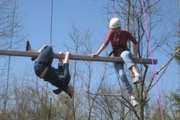
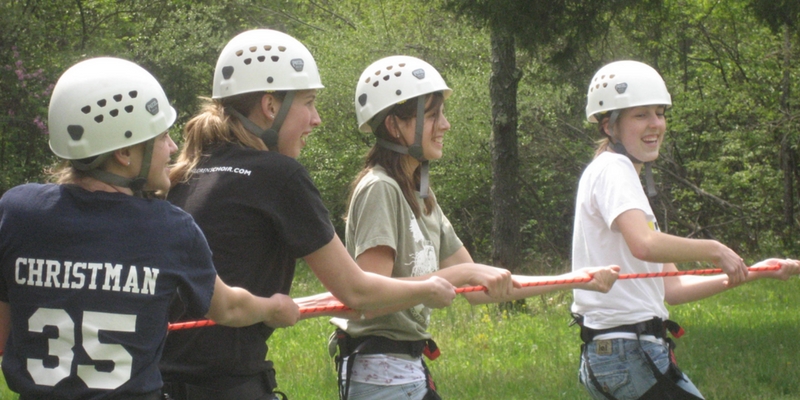
James M. Loy, Miami University
Listen to the audio podcast
Read the story
The idea seems simple enough. Almost obvious, really. And yet, it might even help ignite what’s been called the third revolution of health and wellness.
“It might even be more like the fourth,” says Jay Kimiecik, associate professor of kinesiology in Miami University’s College of Education, Health and Society.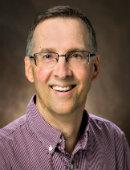 Dr. Jay Kimiecik
Dr. Jay Kimiecik
It’s an idea grounded in something called Eudaimonia, and it’s not entirely new. “It is based on Aristotle’s idea of humans,” says Kimiecik. “So it goes back a long way, but applying it to health is where I feel the cutting edge is going.”
For those who have already experienced its positive side effects, Eudaimonia is not a hard sell. But for many, it could represent a kind of paradigmatic sea change, and even necessitate a resistance to a number of deeply embedded cultural norms.
It’s pretty well established that to be healthy, people should stay active, not smoke, eat nutritious foods, get quality sleep, have fulfilling relationships, and so on.
And it’s true. Again and again, data shows that these behaviors can prevent disease, reduce health risks, and improve wellbeing. But the problem is that most health and wellness plans -- those that require some kind of lifestyle change like a workout regimen or diet, for example -- do not work very well for most people, especially over the long-term.
Academic literature shows that most programs only produce a short-term success, or a bump up, followed by a regression back to baseline when the intervention ends.
“It is a general trend,” says Kimiecik. And the trend applies to people of all ages too, and it’s not only confined to the arcane findings of academic research either. Anyone who has either tried to diet, or known someone who has, can likely relate to this yo-yo effect on some level.
But why? What’s missing?
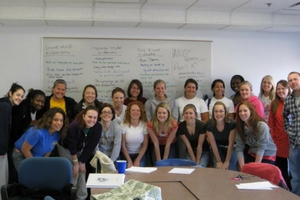 “The majority of work in exercise psychology has shown that if you exercise regularly, you will feel better,” Kimiecik says. “You will have enhanced self-esteem. You will have enhanced confidence. You will have heightened emotionality. So if you do that behavior, you will get these things. Okay. So why aren’t people doing that?”
“The majority of work in exercise psychology has shown that if you exercise regularly, you will feel better,” Kimiecik says. “You will have enhanced self-esteem. You will have enhanced confidence. You will have heightened emotionality. So if you do that behavior, you will get these things. Okay. So why aren’t people doing that?”
The reason, according to Kimiecik, is that most weight loss plans and workout regimens and most health advice in general comes from expert-driven biomedical models that prioritize prescriptive-based interventions that focus almost exclusively on the behaviors that people should either stop or start doing.
“It starts with information and rationalization,” says Kimiecik. “But based on what we know about humans, the whole paradigm of health or health behavior change is misguided. And I am not demeaning the work by some very, very good researchers. But it is in the implementation that we fall short.”
So just focusing on the behaviors alone is not enough. In fact, this approach may be missing the most import part of the whole story.
“What’s missing is the person!” Kimiecik exclaims. “What is missing is the whole totality of the holistic beings that we are. The psychological. The physical. The social. All of that integrates into one to make you a human being.”
Which brings us back to Eudaimonia, and the premise is simple. Eudaimonia suggests that when people find and follow their true selves or purpose for being, they tend to naturally live more fulfilling, meaningful, and healthier, happier lives.
Kimiecik calls this finding the “inner imperative” that unlocks the “innate potentialities” that lie within us all, and it’s this authentic self-expression that leads directly to optimal human functioning.
In less academic speak, it basically means follow your heart.
We tend to hear this idea a lot in various forms. It’s at the center of the hero’s journey in many books and movies. People express it repeatedly when trying to find the right career. And in addition to having Aristotelian roots, it also ties back to Maslow’s famous Hierarchy of Needs and to psychological notions of self-actualization.
So the idea is not new, but applying it to health and fitness is. The idea is that when people start living the lives they truly wish to live, when they find their reason for being, when they express themselves in ways that just feel right, or that align with their own “inner imperative,” they tend to flourish in many ways.
And Kimiecik’s research shows that it actually works.
Eudaimonia in action
In one study, Kimiecik designed an 8-week program called the Well-being Way, which encouraged a group of Miami University employees to connect with a variety of eudaimonic concepts including personal growth, subjective vitality, self-determination, and life engagement.
They participated in activities and discussions and group sessions, which were all designed to help each participant identify and tap into their own individual notions of what a well-lived and rewarding life meant to them.
After the program, the participants exhibited significant increases in both psychological well-being and physical activity levels. Furthermore, those who reported experiencing the greatest increases in life engagement also experienced the biggest boosts in physical activity.
“And it wasn’t a program designed to help them become more physically active,” says Kimiecik. “But the data shows that they were able to do this. Why? Because they began to feel better about who they were.”
He also found similar results after introducing the Well-being Way to a group of ninth graders during a local high school enrichment program.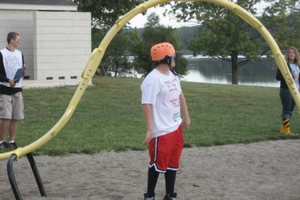
“We did not say, ‘Hey, we are here to make you more active or change your eating patterns,’” Kimiecik explains. “No. We said, ‘We feel that this is an important time for you to get the chance to discover yourselves with your peers.’ Afterwards we found that the kids who had more of this autonomy that was created through the experience became more physically active. They ate more greens and did not drink as much soda. All these kinds of things.”
Kimiecik has also written several books to help people explore the subject from different angles.
His book The Intrinsic Exerciser explains how the joy and flow that can be found in exercise is much more important than focusing on the health benefits alone. Runner as Hero is an autoethnographic account that uses Kimiecik’s own journey to become a master’s runner as a case study.
More recently, his newest book, Losing Weight in Six Days, is a novel that tells the story of Annie, who finally discovers a way to change her life after 20 years of unsuccessful weight loss attempts.
Each book is an attempt to “try to create stories that might get people interested,” he says. Because after they develop these deeper internal connections, they often experience boosts in vitality that helps them cope with stress and get better sleep. They tend to start socializing more. They become more physically active and even start eating better.
All of these healthier behaviors become a naturally occurring by-product of Eudaimonia.
But many barriers still exist
For Eudaimonia to be effective, however, people must take a much more active role in the process and in their own lives, to figure out who they really are, what they really want, and how they really want to live.
But this act of looking deep within, this highly individualized pursuit of purpose and meaning, is not necessarily prioritized in our society today.
Yes, the idea of following your heart sounds nice and we do hear it a lot. But it is usually expressed as nothing more than a passing platitude. The truth is that the vast majority of our contemporary cultural and social institutions are set up in a way that precludes most people from conducting this type of ongoing self-exploration.
Far more often, institutions like school systems and places of employment, for example, are riddled with standardizations and constrictions, and with rules and regulations, that stifle self-exploration and self-expression. Even most aspects of life are driven by the goals of a powerful and materialistic market-based society that pushes consumable products and services as the quick and easy solution to most problems.
In short, “our culture does not give a darn about this,” Kimiecik says. “And, to me, this is one of the major challenges of the 21st century.”
And the challenge is tremendous.
“Because there is no infrastructure in place,” he continues. “There is no place for people to go to work on these things. The paths are what other people are creating for you. And if you venture off that path, you are judged as being not good enough or ‘weird’ or whatever. So if the systems are not in place to support you, then you stay on the path.”
So, in a way, this is a story about resistance and revolution, and in more ways than one.
If the first health-based revolution was around disease treatment. Then the second, of which we are now in the midst, is about disease prevention. But Kimiecik would have us battle against dominate paradigms to push ahead even further still.
But first, people need to understand that many established cultural norms and social systems may be working against them in subtle and, sometimes, not so subtle ways.
Then, they must also do the hard soul-searching work of actively finding their own inner imperatives for living and being -- even if the idea does sound a bit idealistic at first, or even a little bohemian to some.
“You mean to tell me that the reason I haven’t been successful in being physically active, or in changing the way I eat, or that I haven’t been getting the sleep I need, is because I am not living out my inner imperative?” asks Kimiecik.
“Yes,” he answers rhetorically. “That is exactly why.”

